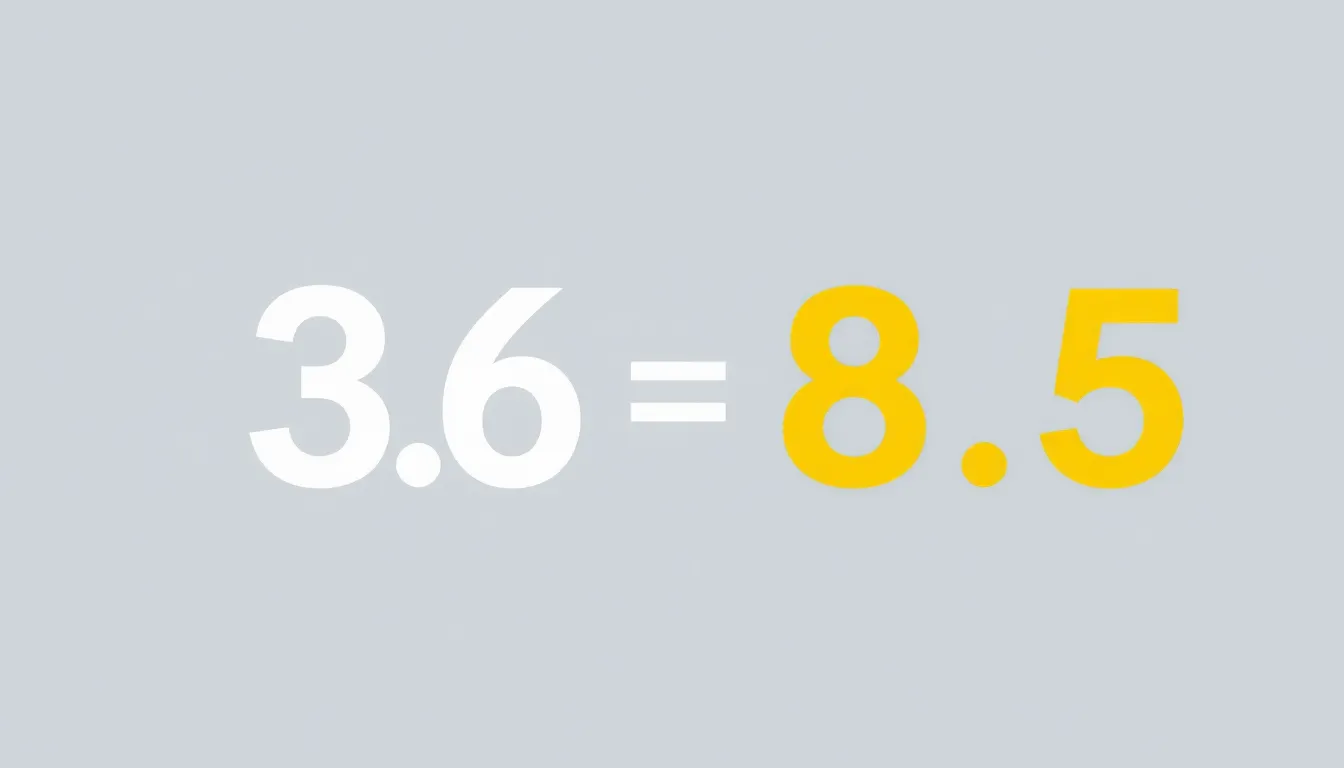When numbers collide, magic happens. Take 83.6 and 85.5 for instance—two seemingly ordinary figures that hold the key to a world of possibilities. Whether you’re crunching numbers for a project or just curious about the math behind everyday life, understanding their relationship can unlock insights that are both practical and entertaining.
Table of Contents
ToggleOverview of 83.6×85.5
The mathematical expression 83.6 multiplied by 85.5 equals 4,862.8. This product arises from straightforward arithmetic, highlighting the relationship between the two numbers. Both figures often appear in various calculations, showcasing their relevance in different fields.
Understanding how 83.6 and 85.5 interact provides insight not only into multiplication but also into analysis in practical scenarios. Each number provides a unique contribution to the outcome. Applying this knowledge can enhance comprehension in contexts such as data analysis or financial projections.
Drafting numerical models necessitates accuracy, and recognizing factors like 83.6 and 85.5 plays a crucial role. Real-world applications often involve computations that utilize such precise figures. In business, for example, they may represent specific metrics or statistical values essential for decision-making.
Exploring the significance of these calculations serves educational purposes. Numbers like 83.6 and 85.5 show how everyday mathematics can inform practical workflows. Professionals frequently engage with this kind of math to optimize various processes.
Lastly, context dictates the relevance of the multiplication result. Different sectors might interpret or utilize the figures differently. In engineering, for instance, precise measurements can dictate project outcomes, thus reinforcing the importance of understanding relationships between numbers like 83.6 and 85.5.
Key Features

Understanding the key features of 83.6 and 85.5 enhances their practical applications. The relevance of these numbers extends into various fields, impacting decision-making processes.
Design and Build Quality
The design incorporates simplicity, which aids in mathematical clarity. Quality influences how easily one can interpret calculations involving 83.6 and 85.5. Graphical representations of these figures often exhibit clean lines to prevent confusion. Accurate calculations rely on robust analysis stemming from these numbers. A strong base ensures precision in outcomes, especially when integrated into models.
Performance Specifications
Performance hinges on the interaction between 83.6 and 85.5, particularly in aggregate results. Efficiency emerges in conversions and applications, especially when multiplied to yield 4,862.8. Numerous sectors secure better results through calculated operations using these figures. Consistency in outputs stands crucial for data analyses, financial forecasts, and project evaluations. Specific applications, such as forecasting sales or engineering metrics, benefit immensely from this numerical relationship.
Comparison with Similar Models
Exploring the relationship between 83.6 and 85.5 reveals a range of insights relevant to mathematical applications.
Advantages of 83.6×85.5
Calculating 83.6 multiplied by 85.5 offers precise results useful in various fields. This multiplication yields 4,862.8, a significant value for financial projections. The output supports accurate data analyses, enhancing decision-making processes. Quick calculations are possible with these numbers, streamlining workflow in engineering metrics and sales forecasting. Efficient manipulation of this relationship improves performance in projects requiring mathematical oversight. Clarity in representing these figures aids in understanding complex scenarios. Consistent results foster trust in data-driven benchmarks.
Limitations of 83.6×85.5
Despite its advantages, 83.6×85.5 does present some limitations. Complexity arises when generalizing results to broader applications without context. The specific nature of these numbers may not encompass all variables essential in various sectors. Additionally, reliance on these values might overlook other influencing factors in calculations. Certain scenarios demand a multifunctional approach beyond basic multiplication. Focusing solely on this interaction risks simplifying complex calculations required in detailed analyses. A lack of versatility in application could hinder broader usage across diverse industries.
User Experience
Understanding user experience provides insights into how 83.6 multiplied by 85.5 impacts various sectors. Users often express appreciation for the clarity and utility of this multiplication in practical applications.
Customer Feedback
Users frequently mention the accuracy and relevance of the product that involves 83.6 and 85.5 in their calculations. Many value its ability to streamline complex data analyses. They highlight its role in enhancing decision-making processes. Specific sectors, such as finance and engineering, report high satisfaction levels. Positive remarks also reflect its contribution to improving efficiency in projects.
Common Issues Reported
Some users report challenges when applying the product to multifaceted calculations. Misunderstanding the context often leads to inaccuracies in projections. Others notice limitations, particularly when generalizing outcomes. Occasional errors in interpretation arise without clear guidelines. Providing additional resources could help mitigate these common issues. Feedback suggests that enhancing user support may improve overall satisfaction.
The exploration of 83.6 and 85.5 reveals their significant role in various fields. These numbers aren’t just figures; they serve as essential tools for enhancing clarity and efficiency in calculations. Their multiplication result of 4,862.8 underscores their practical applications in finance and engineering, where precision is paramount.
Understanding the nuances of these numbers allows for better decision-making and data analysis. While challenges exist in interpreting their context, the benefits of utilizing 83.6 and 85.5 in real-world scenarios far outweigh the limitations. As users continue to appreciate their value, the importance of support and resources in navigating these calculations remains clear. Embracing these insights can lead to more informed choices and improved outcomes across different sectors.



